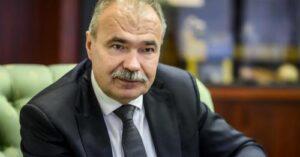István Nagy: we will continue to strive to reduce the risk of bird flu epidemics in every possible way in the future
We will continue to strive to reduce the risk of bird flu epidemics in every possible way in the future, and to this end, we intend to introduce effective incentives for all steps that reduce the risk and increase the safety of farms, in order to promote the safe operation of the poultry sector – the Minister of Agriculture emphasized in his welcoming speech at the 10th World Poultry Day on Friday.

István Nagy, Minister of Agriculture (Photo: drnagyistvan.hu)
At the professional conference held in Vajdahunyad Castle, István Nagy highlighted that since the virus is already present in both migratory and domestic wild birds, it poses a continuous threat throughout the year. The veterinary authority immediately does everything it can to eradicate the disease as soon as possible when an epidemic breaks out, he added, and then continued: in case of suspicion, affected flocks are also destroyed, closed housing is ordered from time to time and minimum disease control conditions are prescribed. The Minister of Agriculture said: the severity and territorial extent of the latest epidemic pointed out that avian influenza will be present almost continuously in our country, in Europe and in many regions of the world as an endemic disease. István Nagy emphasized that “we can be proud of the development curve of agriculture from 2010 to the present, as productivity has increased significantly even in international comparison”. There are already farmers and agricultural enterprises in Hungary today whose production indicators are competitive with the leading Western European countries, he added. He said that there is one thing that needs further progress, however, and that is the added value, which needs to be increased in order to strengthen profitability and competitiveness. “Our commitment is to keep production in Hungarian hands from the farm to the table and to increase Hungarian added value,” he said, adding that by 2027, approximately 4,300 billion forints will be spent on the development of the Hungarian countryside, the Hungarian agriculture and food industry.
He also spoke about the fact that the poultry sector, along with the pig sector, is the most competitive and also the most concentrated livestock farming sector in Hungary
He stressed that the return on investment in the poultry sector is outstanding, which sector players can count on in the long term, as poultry meat is one of the most popular protein sources in the world, the demand for which is constantly growing. On behalf of the government, he confirmed that they will support livestock farmers, including poultry farmers, who fundamentally contribute to Hungary’s food security, with all means. István Nagy gave an overview of the applications affecting livestock farmers and also mentioned that, thanks to the support of the Rural Development Program, the performance of livestock farming has dynamically expanded in European comparison. “Based on the latest EU data, we produced the fifth highest growth in pig and poultry slaughtering among the member states, and the second highest in milk purchase, from January to November 2024,” he explained. “In the area of slaughterings calculated in live weight, we achieved a 6.1 percent increase in poultry last year,” he pointed out. He noted that the Rural Development Program will be closed financially this year and will be replaced by the Common Agricultural Policy (CAP) Strategic Plan, the funding framework of which is almost 5,400 billion forints, of which rural development accounts for 2,900 billion forints thanks to the 80 percent national complementary financing.
MTI
Related news
AM: Government helps farmers with a loan moratorium
🎧 Hallgasd a cikket: Lejátszás Szünet Folytatás Leállítás Nyelv: Auto…
Read more >More than 100 Hungarian farmers also demonstrated in Brussels
🎧 Hallgasd a cikket: Lejátszás Szünet Folytatás Leállítás Nyelv: Auto…
Read more >NAK: Domestic producers await customers with an ample supply of all pine species
🎧 Hallgasd a cikket: Lejátszás Szünet Folytatás Leállítás Nyelv: Auto…
Read more >Related news
New Year’s Eve: shortened opening hours in stores – general store closure on January 1
🎧 Hallgasd a cikket: Lejátszás Szünet Folytatás Leállítás Nyelv: Auto…
Read more >Tejföl is only a name for live flora: new categories for sour dairy products will be introduced from 2026
🎧 Hallgasd a cikket: Lejátszás Szünet Folytatás Leállítás Nyelv: Auto…
Read more >Sausage prices before New Year’s Eve: cheap entry, expensive premium – how big is the gap on the shelves?
🎧 Hallgasd a cikket: Lejátszás Szünet Folytatás Leállítás Nyelv: Auto…
Read more >






